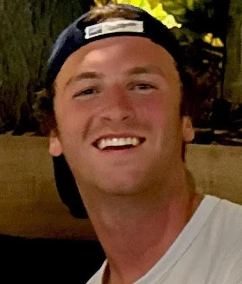
 January 28, 2020 Press Contacts Andrew Hollinger Director, Communications 202.437.1221 [email protected] Museum Press Kit Documents...
January 28, 2020 Press Contacts Andrew Hollinger Director, Communications 202.437.1221 [email protected] Museum Press Kit Documents...
January 28, 2020
Press Contacts
Andrew Hollinger
Director, Communications
202.437.1221
[email protected]
Documents and Photographs Provide New Insight into Operations of One of Nazi Germany’s Killing Centers
WASHINGTON, D.C. — The United States Holocaust Memorial Museum today announced an important new addition to its collection. The Sobibor Perpetrator Collection provides an unprecedented view into the operations of one of the five killing centers Nazi Germany established for the sole purpose of murdering Jews. Created by the camp’s deputy commandant Johann Niemann, this large collection of recently discovered photographs and documents offers new insights into the implementation of the Final Solution and the workings of Sobibor, located in German-occupied Poland, and in operation from April 1942 until November 1943.
Information on the collection is available at ushmm.org/sobibor-perpetrators.
“At least 167,000 Jews were murdered at Sobibor. However, until now we had almost no photographic evidence of this Nazi killing center,” says Museum Director Sara J. Bloomfield. “This groundbreaking collection will increase understanding about the killing center’s operations and the complicity of many people, performing a wide variety of tasks, in order to make it function.”
The Sobibor Perpetrator Collection consists of 361 photographs and dozens of paper documents. The photographs show in new and vivid detail the topography of the killing center; interactions among the camp’s SS staff, and between the SS and auxiliary guards; and the role of women including perpetrators’ wives and local female civilians. During a prisoner uprising at Sobibor on October 14, 1943, Niemann was the acting camp commandant and the first to be killed. The collection documents an SS officer’s career trajectory and how the Nazi system offered opportunities for advancement. “Like others, Niemann began working in the so-called euthanasia program and went on to play a role in the operation of a killing center. Many of the same personnel worked in multiple sites or programs and these connections served the genocidal aims of Nazi Germany,” continued Bloomfield.
The collection was originally owned by Niemann’s widow, Henriette Niemann. In 2015, Niemann’s grandson donated the photographs and documents to the Bildungswerk Stanislaw Hantz, a small non-profit German educational organization comprised of volunteer historians specializing in the history of Operation Reinhard which included three of the five killing centers. A local historian, doing research about his hometown, facilitated the donation. With the help of Niemann’s grandson, historians from the Bildungswerk Stanislaw Hantz and their partners at the Forschungsstelle Ludwigsburg of Stuttgart University were able to locate even more material in the summer of 2019.
“The Museum is grateful for its important partnership with the Bildungswerk Stanislaw Hantz, as well as scholars from the Forschungsstelle Ludwigsburg of Stuttgart University,” says Bloomfield. “Their team of dedicated researchers has devoted years of meticulous work to organizing and analyzing this collection. We look forward to bringing their findings to a broader audience and integrating this new knowledge into the historiography of the Final Solution.”
“International cooperation between large and small institutions can prove very fruitful,” says Andreas Kahrs at Bildungswerk Stanislaw Hantz. “We chose to donate this collection to the Museum because we felt it would be best suited to care for it in perpetuity, while also making the material accessible to researchers from a wide range of disciplines.”
Items in the collection include:
- Approximately 50 loose photographs of the Sobibor killing center from winter 1942 to summer 1943. Besides Niemann, these images show camp commandant Franz Reichleitner, Erich Bauer (in charge of gassing operations), Gustav Wagner (in charge of the daily running of the camp), and more than two dozen additional perpetrators.
- The Sobibor photographs also depict several camp prisoners, local civilian female servants, German official guests, and auxiliary guards (among them possibly John Demjanjuk in two of the photographs).
- A series of 14 loose photographs showing the funeral held in the nearby city of Chelm for the eleven SS men killed during the Sobibor prisoner revolt in October 1943.
- An album of 80 photographs which depict an official trip to Berlin and Potsdam as an award for personnel from the Sobibor and Treblinka killing centers (including Niemann and his wife) and a group of twenty-two Trawniki auxiliary guards.
- An album of 116 photographs depicting Niemann’s early SS career in the Esterwegen and Sachsenhausen concentration camps, as well as his work in the “euthanasia” facilities of Grafeneck, Brandenburg, and Bernburg.
- Four images from the Belzec killing center from late 1941 to early 1942.
- Documents in the collection include correspondence between Niemann and his wife – some bearing a “Sobibor” stamp – and an inventory list of the contents of Niemann’s estate sent to his widow, naming the two photo albums described above.
A living memorial to the Holocaust, the United States Holocaust Memorial Museum inspires citizens and leaders worldwide to confront hatred, prevent genocide, and promote human dignity. Its far-reaching educational programs and global impact are made possible by generous donors. For more information visit, ushmm.org.
Content from United States Holocaust Memorial Museum
Originally published at https://www.ushmm.org/information/press/press-releases/sobibor-perpetrator-collection
originally published at HUMAN RIGHTS - USA DAILY NEWS 24

